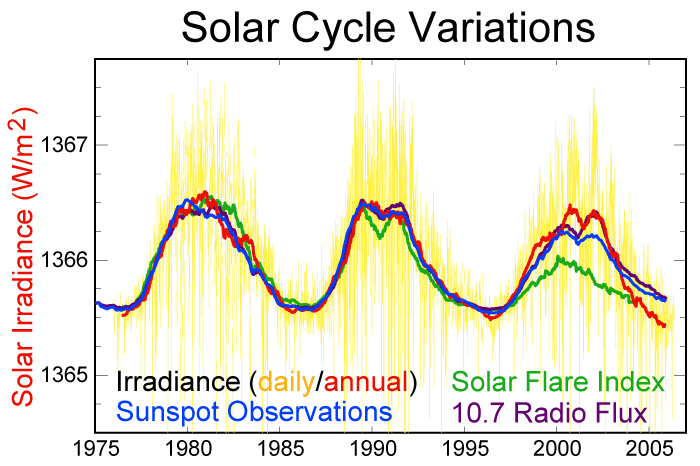NASA Latest Climate Projections
The latest climate model paper from NASA, Future climate change under RCP emission scenarios with GISS ModelE2 (2015), is a fun read.
The meat of the paper are the results in Figure 3 and Table 1 on pages 6 & 7. For the assumed conditions Figure 2 on page 5 has projected CO2, N2O, … concentrations. Scenarios RCP4.5 & 6 are probably the most realistic.
Scenarios RCP4.5 and RCP6.0 show 1.1C-1.9C and 1.6C-2.5C warming respectively in 2100. For 2050 they show 0.9C-1.4C & 0.8C-1.4C warming respectively.
Since 1880 there’s been ~0.9C warming (section 4.1). So RCP4.5 & RCP6.0 show equivalent to about 1.5 times more warming between now and 2050.
In my opinion the 2100 and later projections are like the worries about French demographics in the late 19th century that Germany would overwhelm France in population. That is it’s unlikely that the assumptions for the 2100 & later projections will hold.
Some caveats, ModelE2 in all scenarios has deficient Antarctic sea ice & too low Arctic sea ice minimums (pg 3, section 2.3).
Unrelatedly Antarctic sea ice has some mystery. It’s increased so much in the last few years that the global sea ice anomaly is almost zero (Univ of Ill. Cryosphere).
Antarctic sea ice

An additional assumption in the NASA paper, the Solar cycle is assumed to repeat Solar cycle 23. This is not true for the the current cycle, Solar cycle 24, which is about 2/3 as strong as 23. Solar cycle 24 has the lowest recorded sunspot activity in over the last 100 years (wikipedia).

Solar radiation varies by about 1.3W/m^2 from peak to trough during a solar cycle. The radiative forcing due to CO2 in the RCP4.5 & RCP6 scenarios is about 4W/m^2 in 2050 (Figure 1). So solar radiation variation has very roughly about 1/8 (only half the earth is illuminated) the forcing of CO2. As a side note, solar irradiation variation due to Earth’s orbital eccentricity is about 85W/m^2 [1360W/m^2 * (1 - (0.9832687AU/1.01559AU)^2)].
